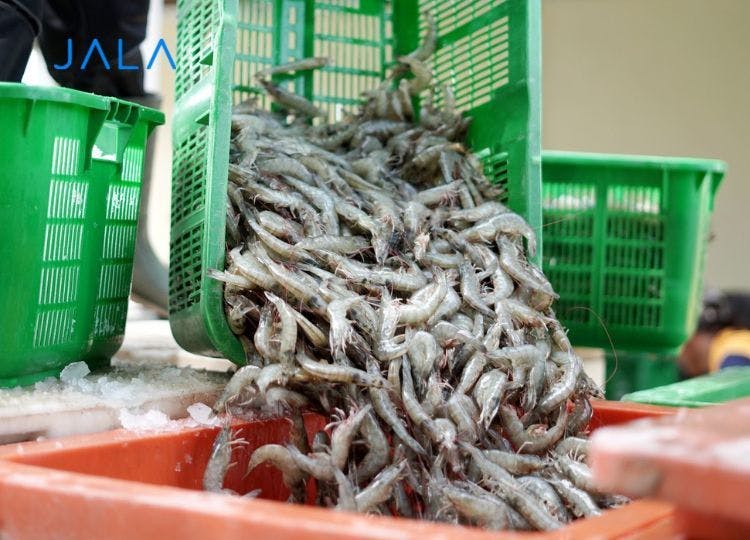
Many people today believe that shrimp farming has great potential. This is because shrimp is a commodity that is high in demand on the global market. As a fishery commodities exporter, Indonesia makes a significant contribution to the global shrimp market. In 2015–2020, Indonesia is capable of fulfilling an average of 6.9 percent of the global shrimp market.
Shrimp farming has significant capital and production expenses. The profit margin from the selling price of shrimp to the market, on the other hand, is quite promising. Shrimp farming can reap a minimum profit of 30% for farmers. Consider the following approximate calculation for a 1,500 m² pond with a stocking density of 100 shrimp/m².
Cultivation capital and operational expenses: IDR 97,137,000
Production targets: 2,250 kgs
COGS per kg of shrimp: IDR 43,000
The selling price of shrimp (size 50): IDR 70,000
Total income: IDR 157,000,000
The reasons why shrimp farming is considered promising
There are at least four underlying reasons why shrimp farming is considered promising. One thing is certain, the government and society are both involved.
The government is encouraging a revitalization and export increase program
The government, through the Ministry of Maritime Affairs and Fisheries, supports the shrimp pond revitalization program. Traditional shrimp farms are the focus of the revitalization program in issue. Rather than acquiring new land for shrimp farming, the Ministry of Maritime Affairs and Fisheries prioritizes the implementation of a revitalization program. Along with revitalization, the government promotes increased shrimp exports. According to the data by Statistics Indonesia, the value of Indonesian shrimp exports in 2021 increased 9.3 percent compared to 2020. This fact makes the government more eager to increase shrimp exports.
The demand for exports and fish consumption continues to rise
The government’s support for increasing national shrimp exports is not without reason. This desire stems from the rising demand for shrimp exports. One of them occurred in Southeast Sulawesi, Indonesia. The overall export volume of vannamei shrimp from Southeast Sulawesi to Japan has reached 102 tons through the second week of March 2021, while the total volume in 2020 was 259.39 tons. In addition to export demand, the number of fish consumption continues to increase. These two phenomena demonstrate that the fishing industry is gaining traction in the global market.
Each kilogram of shrimp has a high potential profit
Shrimp prices fluctuate and can change at any time depending on the production capacity and demand. However, the price of vannamei shrimp remains quite appealing to farmers. This appealing price will lead to a sizable profit potential.
Investment or cooperation scheme in shrimp farms keeps increasing
Recently, there has been an increase in the number of startup companies that provide investment services in shrimp farms. The presence of these companies is one of the factors that make shrimp farms increasingly popular and become an alternative investment. The business models offered are also diverse, including a cooperation scheme for pond management and operation.
Involve JALA in your shrimp farming journey
If you are interested in starting a shrimp farming business, JALA is #HeretoHelp with end-to-end solutions. One of JALA's solutions, [JALA App (https://jala.tech/app) or the farm management app, allows you to
- Monitor 40+ cultivation parameters
- Analyze cultivation conditions in visual charts
- Manage farm finances and inventory
- Monitor shrimp prices trend in various regions
- And many more!
What are you waiting for? Let's involve JALA App in your shrimp farming journey! Start now at app.jala.tech or download the app at Google Play Store or App Store.






